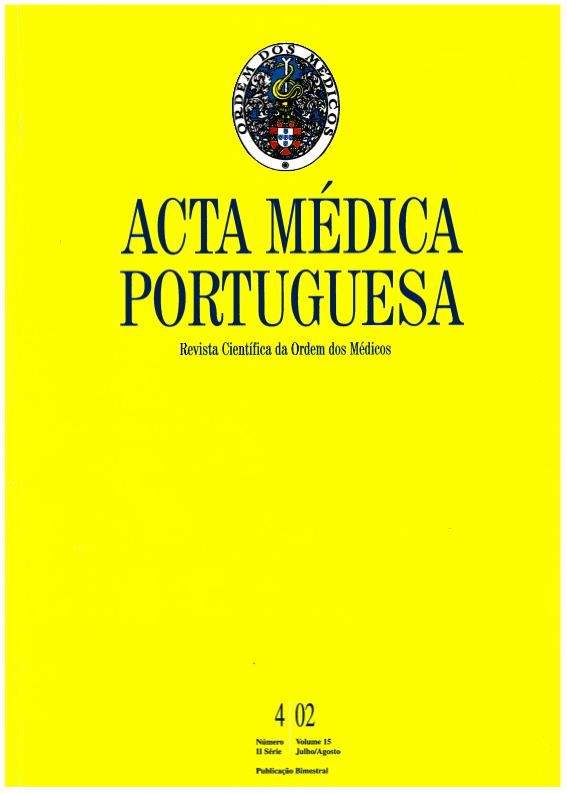Libertação de citocromo c por interacção da bilirrubina, do beta-amilóide e do glicoquenodesoxicolato com mitocôndrias isoladas.
DOI:
https://doi.org/10.20344/amp.1964Resumo
The pathogenesis of cholestasis, bilirubin encephalopathy, and Alzheimer's disease appears to result from accumulation of diverse cytotoxic agents, which in turn may cause apoptotic cell death. In addition, mitochondria has lately been considered as a central executioner of programmed cell death, through the release of caspase activating factors. The aims of this study were to: (a) investigate mitochondrial perturbation during incubation of isolated mitochondria with unconjugated bilirubin (Bb), amyloid beta-peptide (A beta), and glycochenodeoxycholate (GCDC); (b) characterize membrane perturbation in isolated mitochondria induced by each toxic agent, and determine whether the mitochondrial permeabilization is required for cytochrome c redistribution. Mitochondria were isolated from rat liver and brain. Swelling and cytochrome c release were evaluated by spectrophotometry and western blot, respectively. The results showed that Bb as well as A beta and GCDC act directly at the mitochondrial level causing increased organelle volume, permeabilization, as well as cytochrome c release from the intermembrane space in a dose-dependent manner (P < 0.01). Moreover, cyclosporine A inhibited mitochondrial permeability, particularly after Bb- and GCDC-induced swelling (P < 0.01). Cytochrome c efflux was invariably prevented by cyclosporine A (P < 0.05). In conclusion, the results indicate that Bb-, A beta-, and GCDC-induced toxicity, culminating in apoptosis, may result from enhanced mitochondrial permeability, followed by cytochrome c efflux, which can be explained at least in part by the megapore opening.Downloads
Downloads
Como Citar
Edição
Secção
Licença
Todos os artigos publicados na AMP são de acesso aberto e cumprem os requisitos das agências de financiamento ou instituições académicas. Relativamente à utilização por terceiros a AMP rege-se pelos termos da licença Creative Commons ‘Atribuição – Uso Não-Comercial – (CC-BY-NC)’.
É da responsabilidade do autor obter permissão para reproduzir figuras, tabelas, etc., de outras publicações. Após a aceitação de um artigo, os autores serão convidados a preencher uma “Declaração de Responsabilidade Autoral e Partilha de Direitos de Autor “(http://www.actamedicaportuguesa.com/info/AMP-NormasPublicacao.pdf) e a “Declaração de Potenciais Conflitos de Interesse” (http://www.icmje.org/conflicts-of-interest) do ICMJE. Será enviado um e-mail ao autor correspondente, confirmando a receção do manuscrito.
Após a publicação, os autores ficam autorizados a disponibilizar os seus artigos em repositórios das suas instituições de origem, desde que mencionem sempre onde foram publicados e de acordo com a licença Creative Commons









